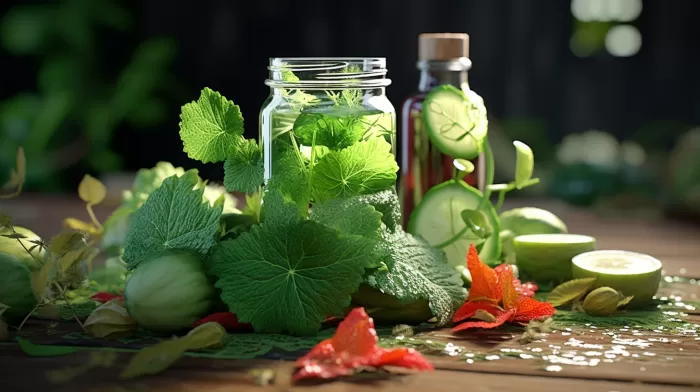As a kid, I was no stranger to poison ivy. My extreme sensitivity to the plant meant almost daily struggles with itchy, inflamed skin that made my childhood outdoor adventures a lot less fun. However, home remedies like calamine lotion and even a homemade paste made from Mrs. Dash were my saving grace. Let’s dive into some other effective natural ways you can tackle the painful symptoms of poison ivy.
Understanding poison ivy and related plants
If you’re interested in learning more about poison ivy, poison-ivy.org is an excellent resource. The website offers valuable information on the various types of poison ivy and poison oak (there are two of each), as well as poison sumac. And for those looking to avoid these irritating plants, it even provides a USA map detailing which areas are most infested with each.
Why poison ivy hurts so much
The extreme discomfort experienced when we come into contact with poison ivy can be attributed to a substance called urushiol. This highly potent natural poison induces itching, swelling, blistering, pain, and feverish symptoms in an allergic reaction. It can even cause breathing difficulties for those with severe allergies and require immediate medical attention. Surprisingly, you can develop these symptoms even if your skin hasn’t directly touched the plant. If poison ivy’s active oil is present on your hands, anything you touch can trigger the reaction.
Using baking soda and oatmeal baths and pastes
One of the most effective ways to minimize the spread of poison ivy and soothe itching is by drying the affected areas. Oatmeal and baking soda can serve this purpose remarkably well. Fill a tub, sink, or basin with a half cup of baking soda or one cup of oatmeal, and let the affected areas soak. Alternatively, you can mix either ingredient with a small amount of water to form a thick paste that you can directly apply to the irritated skin.
Vive la toothpaste, sea salt, and vinegar
Many people who have grappled with poison ivy or bug bites swear by plain white toothpaste to alleviate the itch. Equally as effective, pink Himalayan sea salt can also be used to create a paste that helps to draw out the toxins from the skin, thus drying the area and reducing itching. White vinegar and apple cider vinegar are astringents that provide similar benefits. You can apply these to the affected area using either a warm, wet compress or by soaking.
Soothe with aloe vera gel and cucumber pulp
Aloe vera plants are known to have an almost magical effect on itching, scarring, and skin rashes. You can extract this soothing gel-like liquid from the plant itself or purchase aloe vera gel from a store. Simply apply to the affected area for immediate relief.
Another natural remedy worth trying is scraping the insides of a cucumber and applying the pulp onto the rash. Like aloe vera, cucumber offers a cooling and soothing effect on irritated skin.
Next time you have a run-in with poison ivy or perhaps even poison oak or sumac, consider giving these home remedies a try. And, of course, there’s always the old standby: calamine lotion and over-the-counter antihistamines.



